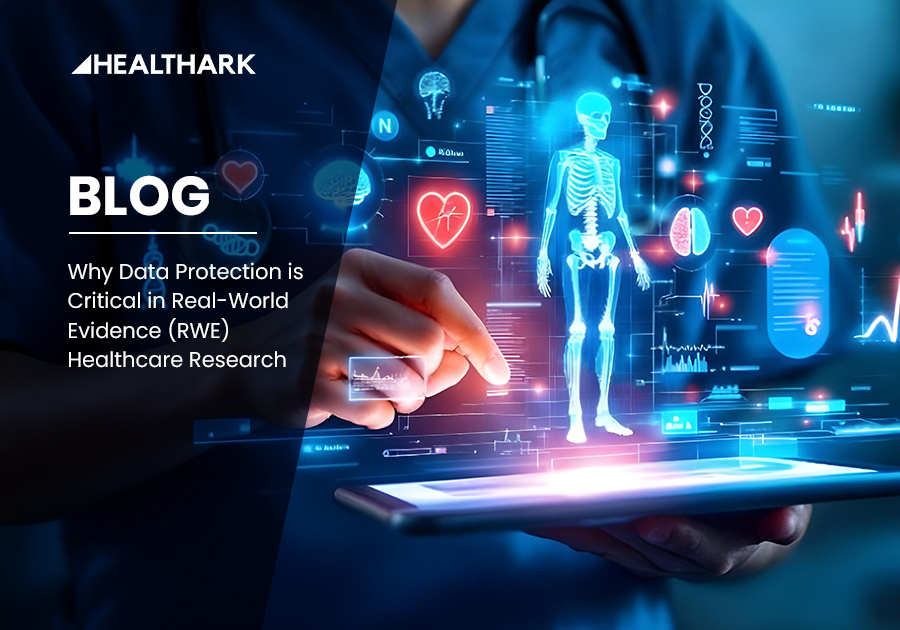Real-World Evidence (RWE) is revolutionizing the way we make healthcare decisions by using data collected from everyday clinical practices. This data comes from sources like patient registries, insurance claims, and Electronic Health Records (EHRs). The insights gained from these data sets are fuelling progress in areas like drug development, post-market surveillance, and personalized medicine. However, as the volume of sensitive patient data grows, so does the challenge of keeping that data secure and private.
As healthcare organizations, researchers, and tech companies continue to embrace RWE, protecting patient data becomes non-negotiable. This article explores why a robust data protection framework is essential for RWE and how organizations can navigate the ever-evolving landscape of privacy regulations and security risks.
Why Data Protection is Vital for RWE
RWE relies on large, diverse, and often long-term data sets. These datasets can include highly sensitive information such as personal identifiers, genetic data, and clinical outcomes. Without strong protections in place, the risks are significant:
- Risk of Re-identification: Even anonymized data can sometimes be linked back to individuals, threatening patient privacy.
- Regulatory Fines: Non-compliance with privacy laws like GDPR or HIPAA can lead to hefty fines and reputational damage.
- Loss of Trust: If patients and the public lose confidence in how their data is being handled, participation in crucial healthcare research may decrease.
For RWE to continue to be effective and trusted, it’s critical that data protection measures are embedded into every step of the process—from data collection to analysis and beyond. Strong privacy, security, and compliance practices are the foundation upon which sustainable RWE can thrive.
Navigating the Regulatory Landscape: GDPR, HIPAA, and Global Regulations
RWE operates in a complex regulatory environment, with several data protection laws guiding how sensitive health information should be handled. Some of the most significant regulations include:
- General Data Protection Regulation (GDPR – EU)
The GDPR, which applies to organizations operating within the European Union, considers health data to be “special category data.” This means it’s subject to stricter rules on collection, processing, and sharing. Some key principles under GDPR include:
- Lawfulness and Transparency: Organizations must be transparent about why they are collecting data and ensure it is for lawful purposes.
- Data Minimization: Only the data necessary for the purpose at hand should be collected.
- Patient Rights: Patients have the right to access, correct, and erase their data at any time.
- Health Insurance Portability and Accountability Act (HIPAA – US)
In the United States, HIPAA regulates the handling of Protected Health Information (PHI). Key aspects of HIPAA compliance for RWE include:
- De-identification Standards: Before using health data in research, PHI must be de-identified unless explicit consent is obtained.
- Business Associate Agreements (BAAs): Healthcare organizations must ensure that their third-party vendors are also compliant with HIPAA regulations.
- Security Safeguards: HIPAA mandates the use of encryption, access controls, and other technical safeguards to protect PHI.
- Other Regional Laws
Many countries are introducing their own data protection laws, such as India’s DPDP Act (2023) and Canada’s PIPEDA, which further complicate compliance for organizations working with RWE data across borders. These laws may introduce unique challenges such as restrictions on cross-border data transfers or the need for country-specific privacy measures.

Building Blocks of Data Protection in RWE
To mitigate risks and ensure compliance, organizations must implement key data protection practices. These practices form the backbone of any RWE data strategy:
- Data Minimization and Purpose Limitation
Organizations should only collect the data that is absolutely necessary for a specific purpose. This practice reduces exposure to unnecessary risks and ensures compliance with GDPR’s principle of data minimization. It’s also important to ensure that any data collected for RWE analysis is directly aligned with patient consent or other legal justifications, such as public interest or vital interests.
Data minimization is achieved through techniques like data aggregation and data masking, which help reduce the granularity of data while maintaining its utility for analysis. This limits the potential for re-identification or exposure of personal data.
- De-identification and Tokenization
De-identification helps ensure that sensitive patient information is protected. In RWE, anonymizing data using techniques like k-anonymity or l-diversity ensures that individual identities cannot be re-linked. Tokenization, where sensitive data is replaced with non-sensitive equivalents, also helps prevent breaches while still allowing organizations to analyse data effectively.
Advanced de-identification techniques such as k-anonymity ensure that no individual is distinguishable from at least ‘k’ other individuals in a dataset. l-diversity ensures that even within equivalence classes, sensitive data points (such as medical conditions) are diverse enough to prevent identification.
- Secure Storage and Access Control
Data should be securely stored and encrypted to prevent unauthorized access. End-to-end encryption (both in transit and at rest) is critical, and access to data should be tightly controlled based on role-based policies. In addition, multi-factor authentication (MFA) can be implemented to further protect against unauthorized access. Secure cloud storage solutions, which are compliant with industry standards such as ISO 27001 or HITRUST, should be used to store healthcare data safely.
AES-256 encryption is widely used to ensure that data remains secure during storage and transfer. Implementing role-based access control (RBAC) allows only authorized personnel to access sensitive data, and PKI (Public Key Infrastructure) further strengthens authentication.
- Governance and Compliance Auditing
A comprehensive data governance framework is necessary to maintain transparency and accountability throughout the RWE process. Regular compliance audits and breach response plans help ensure that any data misuse or non-compliance is promptly addressed. It’s also crucial to ensure that any third-party vendors, such as contract research organizations (CROs) or analytics partners, comply with the same data protection standards.
The use of blockchain for audit trails and automated compliance monitoring systems can ensure continuous and real-time compliance with data protection laws. These technologies provide immutable records that prevent tampering and ensure accountability.
Looking Ahead: AI, Federated Learning & Privacy by Design
As the healthcare industry increasingly turns to Artificial Intelligence (AI) to analyse RWE, new privacy challenges arise. Some of the most promising privacy-preserving techniques include:
- Federated Learning: This method enables machine learning models to be trained across multiple organizations without the need to share sensitive data. Instead, data remains localized, and only model updates are shared. This approach helps protect patient privacy while still allowing organizations to leverage RWE for meaningful insights.
- Differential Privacy: By introducing statistical noise to datasets, differential privacy ensures that individual data points remain private while still allowing organizations to extract valuable insights from the data.
- Privacy by Design: Embedding privacy protections into the development process—right from the outset—ensures that data security and privacy concerns are addressed early on, reducing the risk of breaches and ensuring compliance with evolving regulations.
Federated learning and differential privacy are pivotal for scaling AI in healthcare while preserving privacy. By processing data locally and sharing only aggregated model updates, federated learning mitigates the risk of sensitive data exposure. Differential privacy ensures that data insights do not compromise individual privacy by adding noise to datasets.
Conclusion
Real-World Evidence is a powerful tool for improving healthcare outcomes and driving innovation. However, the success of RWE hinges on the trust that patients and the public place in the data’s security and privacy. By embedding strong privacy, security, and compliance practices into every stage of the RWE process—from data collection to analysis—organizations can unlock valuable insights without compromising patient trust.
As the landscape of healthcare data evolves, so too must the strategies for safeguarding it. The future of RWE will depend on organizations’ ability to adapt to new privacy regulations and emerging technologies, ensuring that patient data is protected at every step while still advancing healthcare research.




